JAXA's PADLES dosimeters have been utilized in many international collaborative projects.
Dosimetric PADLES is "international collaborative experiments in the field of space radiation measurement" using the PADLES radiation dose measurement system.
At the ICCHIBAN project, Intercomparison of the Response of Space Radiation Dosimeters and Spectrometers to Heavy Ion Beams at the Accelerator Facilities, high measurement accuracy of the PADLES dosimeter was evaluated.
JAXA also has many experiment experiences with the radiation dose measurements onboard the ISS. JAXA has been participating in the MATROSHKA project, series of experiment that installed the Phantoms*1 on the outside and inside of the ISS to evaluate the radiation dose on Extravehicular Activity (EVA), and the ALTCRISS project, the experiment that uses tissue equivalent materials*2 to evaluate radiation influence that depends on shielding material.
- *1 Phantom
- This is a human mannequin without limb that simulates a human body. It is composed of materials equivalent to human tissue with respect to radiation dose. It simulates the reactions that occur in the internal environment of a human body when exposed to space radiation.
- *2 Tissue equivalent material
- This is materials equivalent to human tissues in each body structures and organs with respect to radiation dose.
1. MATROSHKA project
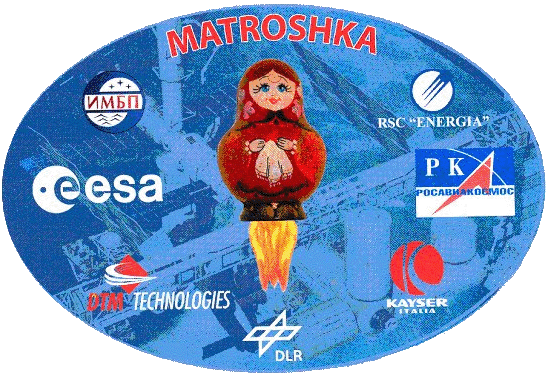
This is an international multi-user experiment led by the German Aerospace Center (Deutsches Zentrum fur Luft- und Raumfahrt : DLR). For measuring the radiation doses of astronauts during inside and outside activities on the ISS, the MATROSHKA Phantom that human mannequins composed of human bones and simulated organs was installed on the outside and inside of the ISS. The experiment began on February 2004.
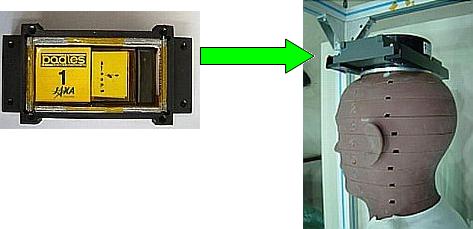
JAXA°«s PADLES dosimeter was set up to head of the MATROSHKA Phantom.
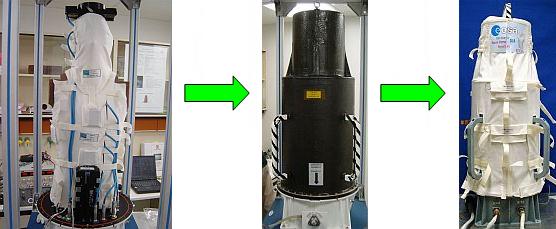
The MATROSHKA Phantom which put in the radiation detector of each country was wore a poncho (left), put in a shield container (center), then covered outer of multilayer thermal insulation (right).
The MATROSHKA Phantom measured the space radiation dose for about one year after installed outside wall of the Zvezda Service Module of the ISS (below).

Three organizations of JAXA/ESA/ROSCOSMOS conducted the MATROSHKA2 experiment together in the Japanese Experiment Module, Kibo from 2010.
The PADLES dosimeter was launched on the Progress M-05M (37P) on April 29, 2010. And then a Cosmonaut installed 25 dosimeters in the MATROSHKA Phantom body. The Phantom was installed in Kibo by JAXA astronaut Noguchi. After carrying out measurement for about 11 months, the dosimeter was returned on the Soyuz TMA-M (24S) on March 16, 2011.
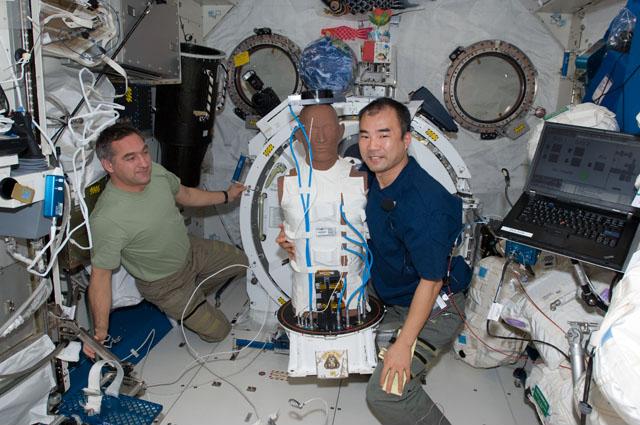
JAXA astronaut Noguchi (right) with the Phantom which put in the dosimeter on May 2010 (Credit: NASA)
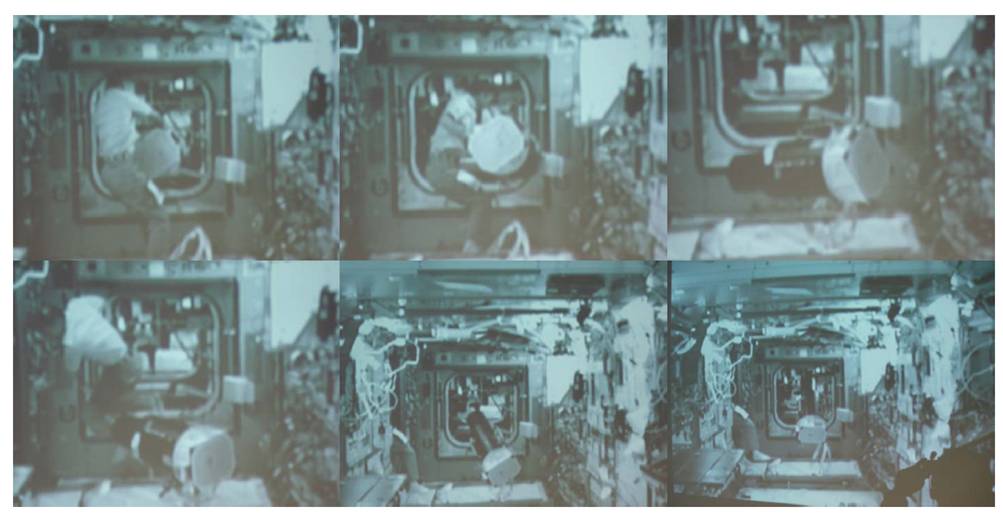
Link to : MATROSHKA project
http://www.dlr.de/me/en/desktopdefault.aspx/tabid-2015/2935_read-4505/
http://www.jaxa.jp/press/2004/01/20040128_protein_j.html#section-5
http://iss.jaxa.jp/kiboexp/field/others/matryoshka20100522.html
http://iss.jaxa.jp/kibo/kibomefc/srpds/matryoshka.html
http://iss.jaxa.jp/en/kiboexp/news/matryoshka20110322.html
2. ROSCOSMOS Matryoshka R Ball Type Phantom Project
Since May 21, 2012, Matryoshka R Ball Type Phantom experiment has been started on board the Japanese Experiment Moduke , Kibo . The experiment measures deep body radiation to conduct risk assessment for astronauts and cosmonauts caused by space radiation exposure.
| Experiment Title | Installed location | Flight Period of PADLES |
|---|---|---|
| Matryoshka R Ball Type Phantom Experiment | F2 rack in Kibo’s Pressurized Module (PM) | May Sep 2012 (125 days) |
| Matryoshka R#2 Ball Type Phantom Experiment | Air Lock in Kibo’s Pressurized Module (PM) | Sep 2013 March 2014 (170 days) |
| Matryoshka R#3 Ball Type Phantom Experiment | Air Lock in Kibo’s Pressurized Module (PM) | March 2015 March 2016 (340 days) |
Matryoshka-R Ball Type Phantom Experiment
The first experiment was implemented from May 21 to September 17, 2012 (125 days). Russian cosmonaut Oleg Kononenko took out the Ball Type Phantom stored in the Zvezda and installed inside F2 rack in Kibo's Pressurized Module (PM).
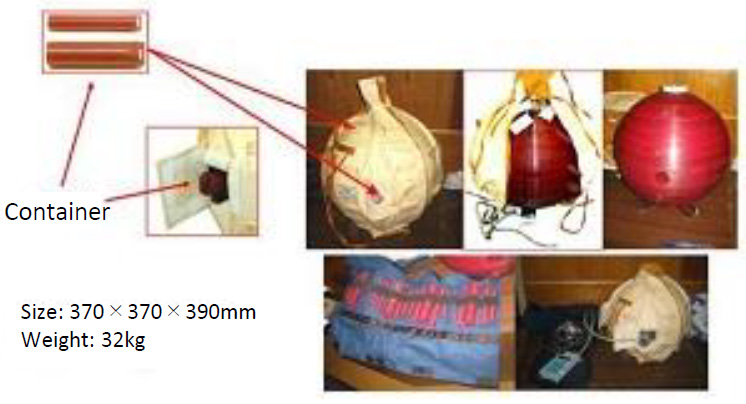
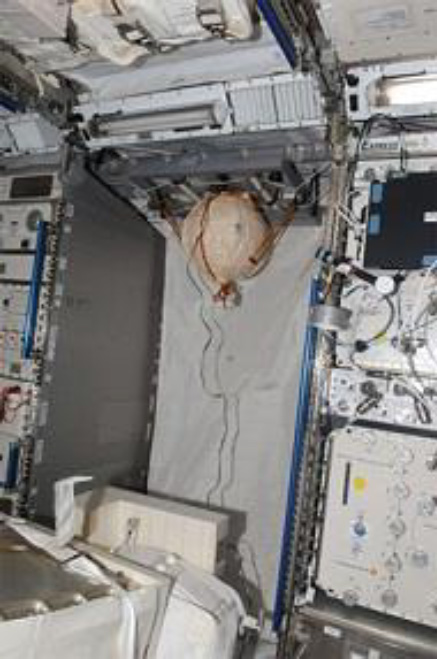
Appearance of Ball Type Phantom (left)
Ball Type Phantom i nstalled in Kido (right)
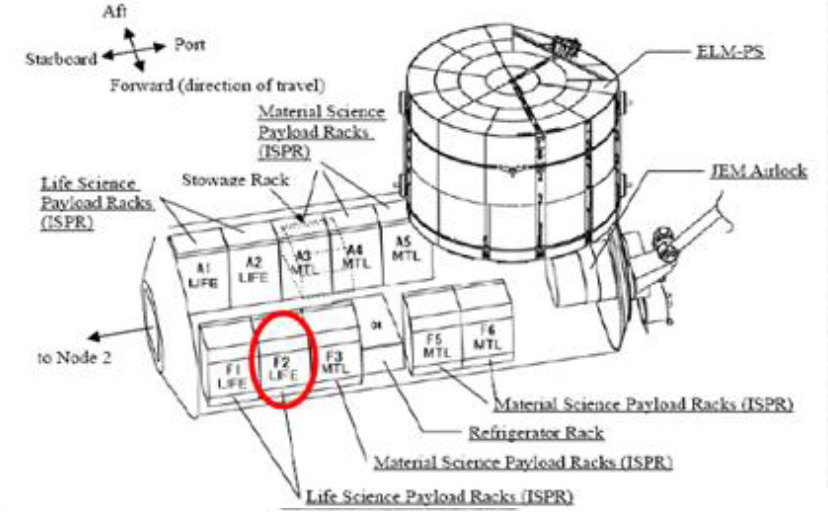
Installed location of Matryoshka-R Ball Type Phantom (F2 Rack in Kibo)
International joint research Matryoshka-R experiment has started on board Kibo
Matryoshka-R#2 Ball Type Phantom Experiment
The second experiment was implemented from September 26, 2013 to March 14, 2014 (170 days).
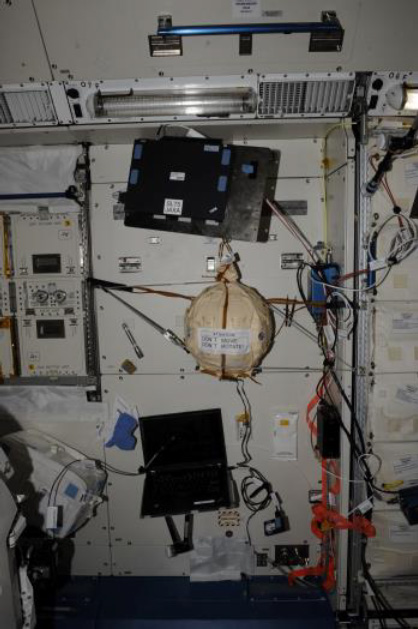
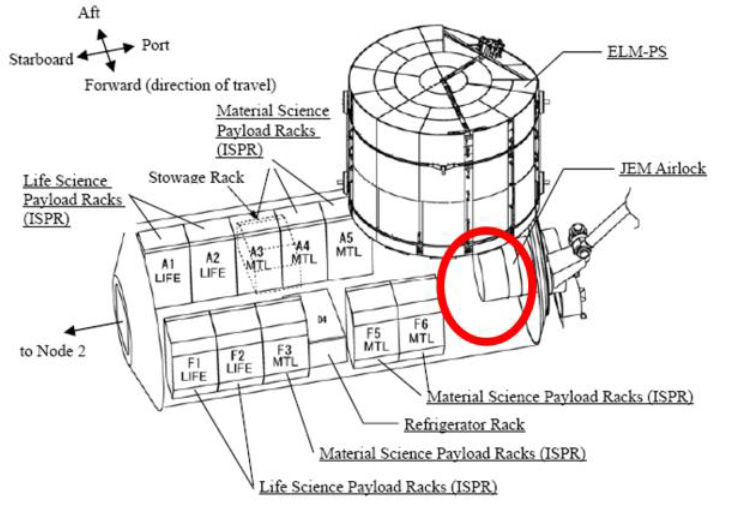
Ball Type Phantom i nstalled in Kido (left)
Installed location of Matryoshka-R#2 Ball Type Phantom (Air Lock in Kibo ) (right)
Matryoshka-R#3 Ball Type Phantom Experiment
The third experiment was implemented from March 28, 2015 by March 2, 2016 (340 days).
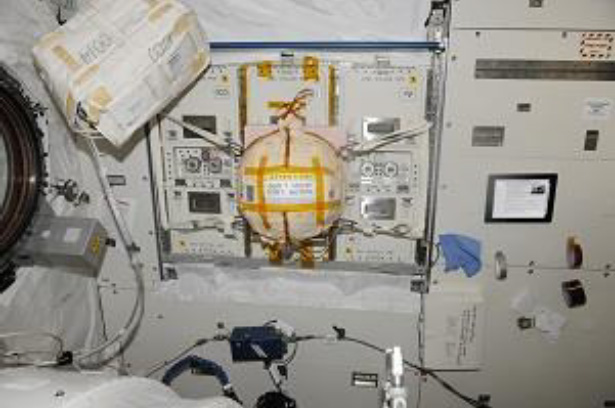
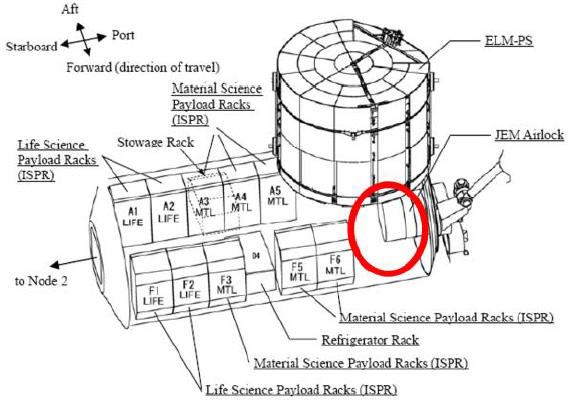
Ball Type Phantom i nstalled in Kido (left)
Installed location of Matryoshka-R#2 Ball Type Phantom (Air Lock in Kibo ) (right)
3. ALTCRISS project
ALTCRISS (Alteino Long Term Monitoring of Cosmic Rays on the International Space Station) is an international collaborative experiment led by the National Institute of Nuclear Physics (Istituto Nazionale di Fisica Nucleare : INFN). This experiment investigated effectiveness of the shielding materials and thickness of the ISS crew cabins by installing dosimeters to the shielding block inside the Zvezda Service Module of the ISS.
The experiment began on October 2005, and four measurement runs have been completed so far. The measured data are now being processed at each participating organizations.
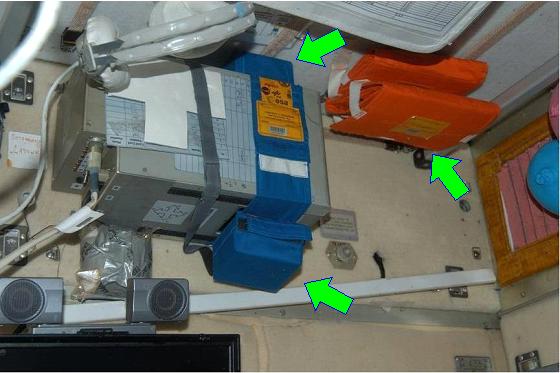
Link to : ALTCRISS project
http://www.esa.int/SPECIALS/Astrolab/SEM8HEAATIME_0.html
4. BRADOS / Space-ICCHIBAN project
BRADOS (Theme name : Acquisition of Data About the Radiological, Electromagnetic and Different Physical Environments on Board ISS, and Their Effects on the Safety of the Crew, Space Equipment and Materials) is an international collaborative experiment led by IMBP and NIRS and in which ISS partners participates. This is the intercomparison experiments of the performance using the different passive radiation dosimeters and deep dose impact experiments in the same time and a same location.
The experiment began on May 2007, and three measurement runs have been completed so far. The measured data are now being processed at each participating organizations.
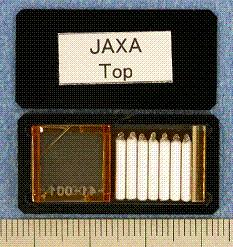
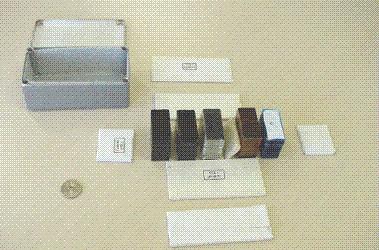
Link to : BRADOS / NIRS dosimetry experiment (National Institute of Radiological Sciences)
http://www.nirs.go.jp/news/press/2003/02_26.shtml